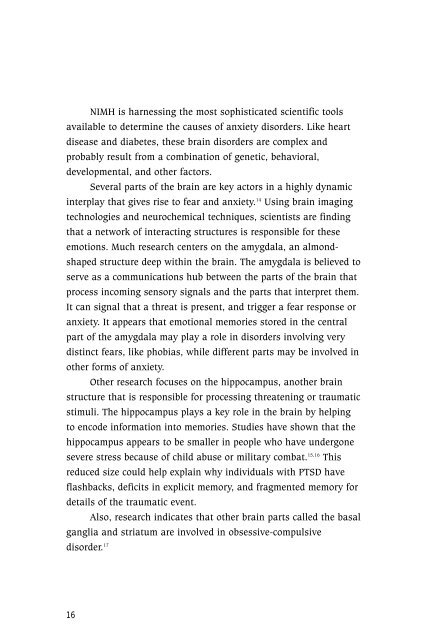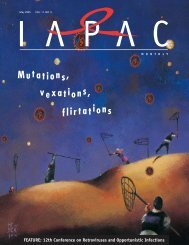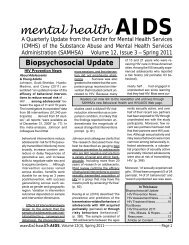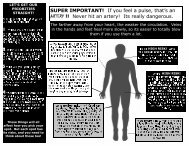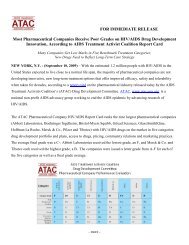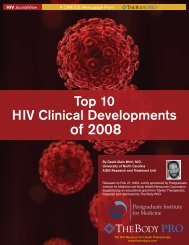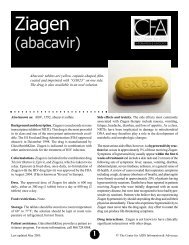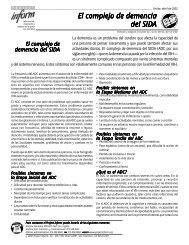Anxiety Disorders - CD8 T cells
Anxiety Disorders - CD8 T cells
Anxiety Disorders - CD8 T cells
You also want an ePaper? Increase the reach of your titles
YUMPU automatically turns print PDFs into web optimized ePapers that Google loves.
NIMH is harnessing the most sophisticated scientific tools<br />
available to determine the causes of anxiety disorders. Like heart<br />
disease and diabetes, these brain disorders are complex and<br />
probably result from a combination of genetic, behavioral,<br />
developmental, and other factors.<br />
Several parts of the brain are key actors in a highly dynamic<br />
interplay that gives rise to fear and anxiety. 14 Using brain imaging<br />
technologies and neurochemical techniques, scientists are finding<br />
that a network of interacting structures is responsible for these<br />
emotions. Much research centers on the amygdala, an almondshaped<br />
structure deep within the brain. The amygdala is believed to<br />
serve as a communications hub between the parts of the brain that<br />
process incoming sensory signals and the parts that interpret them.<br />
It can signal that a threat is present, and trigger a fear response or<br />
anxiety. It appears that emotional memories stored in the central<br />
part of the amygdala may play a role in disorders involving very<br />
distinct fears, like phobias, while different parts may be involved in<br />
other forms of anxiety.<br />
Other research focuses on the hippocampus, another brain<br />
structure that is responsible for processing threatening or traumatic<br />
stimuli. The hippocampus plays a key role in the brain by helping<br />
to encode information into memories. Studies have shown that the<br />
hippocampus appears to be smaller in people who have undergone<br />
severe stress because of child abuse or military combat. 15,16 This<br />
reduced size could help explain why individuals with PTSD have<br />
flashbacks, deficits in explicit memory, and fragmented memory for<br />
details of the traumatic event.<br />
Also, research indicates that other brain parts called the basal<br />
ganglia and striatum are involved in obsessive-compulsive<br />
17 disorder.<br />
16


